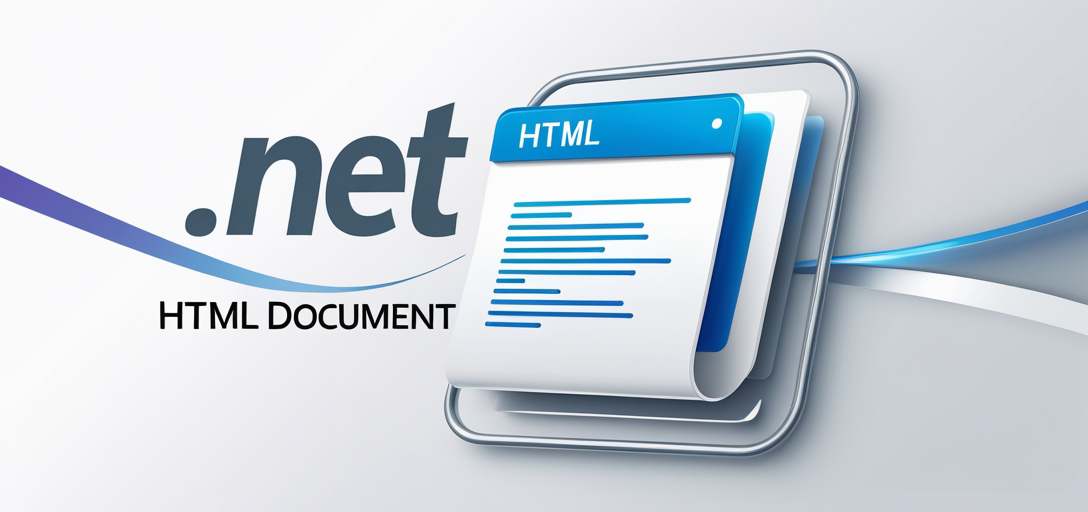Mastering GroupDocs.Viewer .NET: Effortless File Download and Document Rendering
Introduction
Struggling with file downloads or document rendering in web-friendly formats? This tutorial will guide you through using GroupDocs.Viewer for .NET to effortlessly handle these tasks, enhancing workflows and user experience.

What You’ll Learn:
- How to download files from a URL using C#.
- Rendering documents into HTML format with GroupDocs.Viewer for .NET.
- Integrating these functionalities into your existing .NET applications.
Prerequisites
Before implementing our solution, ensure you have:
- .NET Framework 4.7 or later installed on your machine.
- A basic understanding of C# and .NET programming concepts.
- Visual Studio IDE for development purposes.
We’ll be using GroupDocs.Viewer for .NET to render documents as HTML, so ensure you’re familiar with NuGet package management in Visual Studio.
Setting Up GroupDocs.Viewer for .NET
To begin, install the necessary GroupDocs.Viewer package:
NuGet Package Manager Console
Install-Package GroupDocs.Viewer -Version 25.3.0
.NET CLI
dotnet add package GroupDocs.Viewer --version 25.3.0
License Acquisition
Start with a free trial or obtain a temporary license for extended testing:
- Free Trial: Download from GroupDocs Releases.
- Temporary License: Apply at GroupDocs Temporary License.
Basic Initialization
Initialize GroupDocs.Viewer by creating a Viewer instance:
using (Viewer viewer = new Viewer("path/to/document"))
{
HtmlViewOptions options = HtmlViewOptions.ForEmbeddedResources();
viewer.View(options);
}
Implementation Guide
We’ll cover downloading files from URLs and rendering them as HTML using GroupDocs.Viewer.
Downloading a File from URL
Fetch files via HTTP requests efficiently with this feature:
Step 1: Set Up the HttpWebRequest
Create an HttpWebRequest object, setting user-agent headers and timeout settings to mimic browser behavior and avoid indefinite waits.
public static Stream DownloadFile(string url)
{
HttpWebRequest request = (HttpWebRequest)WebRequest.Create(url);
request.UserAgent = "Mozilla/5.0"; // Mimics a web browser
request.Timeout = 10000; // Sets timeout to 10 seconds
using (WebResponse response = request.GetResponse())
return GetFileStream(response);
}
Step 2: Retrieve and Stream the Content
Use GetFileStream to copy content into a memory stream for easy manipulation.
private static Stream GetFileStream(WebResponse response)
{
MemoryStream fileStream = new MemoryStream();
using (Stream responseStream = response.GetResponseStream())
responseStream.CopyTo(fileStream);
fileStream.Position = 0; // Reset position for subsequent read operations.
return fileStream;
}
Rendering Document as HTML
GroupDocs.Viewer simplifies converting documents into web-viewable formats:
Step 1: Configure View Options
Set up HtmlViewOptions to specify where and how the output should be saved.
public static void RenderDocument(Stream documentStream, string outputDirectory)
{
string pageFilePathFormat = Path.Combine(outputDirectory, "page_{0}.html");
using (Viewer viewer = new Viewer(documentStream))
{
HtmlViewOptions options = HtmlViewOptions.ForEmbeddedResources(pageFilePathFormat);
viewer.View(options); // Renders the document
}
}
Key Considerations
- User-Agent: Setting this mimics a browser, ensuring compatibility with most servers.
- Timeout Settings: Helps prevent hanging requests during network delays.
- Memory Management: Use
usingstatements to ensure proper disposal of resources.
Troubleshooting Tips
- Ensure your URL is correct and accessible.
- Verify that GroupDocs.Viewer’s license is properly configured for full functionality.
Practical Applications
- Automated Report Generation: Download financial reports from a server, render them as HTML, and integrate into dashboards.
- Document Management Systems (DMS): Convert and display various document formats within an enterprise DMS.
- Educational Platforms: Streamline content delivery by converting educational materials to web-compatible formats.
Performance Considerations
- Optimize memory usage by handling streams efficiently.
- Use asynchronous operations where possible to enhance responsiveness.
- Regularly update GroupDocs.Viewer for performance improvements and bug fixes.
Conclusion
You’ve now mastered downloading files from URLs and rendering documents with GroupDocs.Viewer in .NET. Experiment further by integrating these features into your projects, leveraging their full potential to streamline document management processes.
Next Steps
- Explore additional functionalities offered by GroupDocs.Viewer.
- Consider contributing to open-source projects that use similar technologies.
FAQ Section
- How do I handle large files when downloading?
- Use streaming techniques and adjust timeouts as needed for stability.
- Can I render non-standard file formats with GroupDocs.Viewer?
- Yes, it supports a wide range of document types; check the API Reference.
- What are some common pitfalls in streaming files?
- Not managing memory properly and ignoring network timeouts.
- Is there support for asynchronous operations with GroupDocs.Viewer?
- While GroupDocs.Viewer itself is synchronous, you can wrap calls within async patterns.
- How do I troubleshoot rendering issues?
- Verify file paths, ensure licenses are active, and consult GroupDocs Support.
Resources
- Documentation: GroupDocs Viewer .NET Docs
- API Reference: GroupDocs Viewer .NET API
- Download: GroupDocs Releases for .NET
- Purchase: Buy GroupDocs Products
- Free Trial: Download Trial Version
- Temporary License: Apply for a Temporary License